
Gram for gram, turkey offers more protein than most other meats.
It is also the centerpiece of big celebrations such as Christmas dinner and Thanksgiving.
However, when we discuss the nutritional value and benefits of meat, turkey often seems to be the forgotten one.
We can hear so much about beef, chicken, lamb and pork, so how does turkey meat compare?
This article takes an in-depth look at the nutrition facts and potential benefits of eating turkey.
What Is Turkey?
Turkey refers to the meat of turkey, a large bird native to the American continent.
These birds are generally domesticated and farmed for their meat.
Since turkey is low in myoglobin (a protein that gives red meat its color), it is classed as “white meat”.
People consume turkey throughout the year, with turkey breast and sliced turkey being popular sandwich/salad meats.
However, most people only prepare a whole turkey for significant cultural occasions such as Christmas and Thanksgiving dinner.
Turkey enjoys the most popularity in the Western world, particularly in Canada, Ireland, the United Kingdom, and the United States.
Also, turkey is similar to chicken, both nutritionally and in terms of taste, but it has a stronger flavor and a drier texture.
Numerous turkey products are available, and these include popular choices like turkey bacon and turkey sausages.
Nutrition Facts
Depending on the cut of turkey, the nutritional values can slightly change.
For example, there is a difference between the light and dark parts of turkey meat.
For this reason, here is the nutrition profile per 100 grams of roasted turkey for both light and dark meat (1, 2).
Calories and Macronutrients
| Light Meat | Dark Meat | |
| Nutrient | Amount | Amount |
| Calories | 157 kcal | 187 kcal |
| Carbohydrate | 0 g | 0 g |
| Fiber | – | – |
| Sugar | – | – |
| Fat | 3.2 g | 7.2 g |
| Saturated Fat | 1.0 g | 2.4 g |
| Monounsaturated Fat | 0.6 g | 1.6 g |
| Polyunsaturated Fat | 0.9 g | 2.2 g |
| Omega-3 | 70 mg | 170 mg |
| Omega-6 | 570 mg | 1750 mg |
| Protein | 29.9 g | 28.6 g |
As shown above, there are only small differences between lighter and darker parts of turkey meat.
The main nutritional differences are;
- Lighter parts of turkey contain a slightly higher amount of protein.
- Darker turkey meat contains a larger amount of fat and it is higher in calories.
Other than that, turkey contains large amounts of protein, it is a low to moderate source of fat, and it contains no carbohydrate.
Vitamins
The table below shows how light and dark turkey meat compare regarding their vitamin content.
| Light Meat | Dark Meat | |
| Vitamin | Amount (% RDA) | Amount (% RDA) |
| Vitamin B3 | 34% | 18% |
| Vitamin B6 | 27% | 18% |
| Vitamin B2 | 8% | 15% |
| Vitamin B5 | 7% | 13% |
| Vitamin B12 | 6% | 6% |
| Vitamin B1 | 4% | 4% |
| Folate | 1% | 2% |
Turkey contains a range of B vitamins.
Minerals
| Light Meat | Dark Meat | |
| Mineral | Amount (% RDA) | Amount (% RDA) |
| Selenium | 46% | 58% |
| Phosphorus | 22% | 20% |
| Zinc | 14% | 30% |
| Potassium | 9% | 8% |
| Iron | 7% | 13% |
| Magnesium | 7% | 6% |
| Sodium | 3% | 3% |
| Calcium | 2% | 3% |
| Copper | 2% | 8% |
| Manganese | 1% | 1% |
Turkey contains relatively high amounts of iron, potassium, phosphorus, selenium and zinc.
Overall, darker turkey meat has a slight advantage regarding vitamin and mineral density.
Benefits of Eating Turkey

While it may not be quite as nutrient-dense as red meats like beef and lamb, turkey is nutritious in its own right.
Here is a rundown of six of the biggest benefits of eating turkey.
1. A Rich Source of B Vitamins
Turkey contains the full range of B vitamins in decent amounts, particularly vitamin B3 (niacin) and B6 (pyridoxine).
B vitamins play an essential role in our health, and they are involved in essential processes ranging from energy metabolism to nerve function and hormone production.
Recent research also demonstrates their benefit in several key areas;
- B vitamin insufficiency is associated with depression. Various studies demonstrate that B vitamin supplementation helps to reduce symptoms of depression (3, 4).
- A recent systematic review and meta-analysis suggest that B vitamins play a critical role in the treatment of neurodegenerative diseases. Notably, supplementation with B vitamins improved cognition in several randomized controlled trials (5).
- Lastly, it is worth noting that large subsections of the population in developed countries are at risk of a deficiency in one or more B vitamins (6).
An 8 oz (225 g) serving of light turkey meat provides a substantial amount of B vitamins (1);
- Vitamin B1: 8% DV
- Vitamin B2: 16% DV
- Vitamin B3: 80% DV
- Vitamin B5: 16% DV
- Vitamin B6: 64% DV
- Vitamin B12: 16% DV
- Folate: 5% DV
2. Turkey Contains Carnosine and Other Beneficial Compounds
Similar to all meat, turkey contains various compounds like carnosine, creatine and taurine.
Carnosine is the result of the two amino acids histidine and beta-alanine combining, and it is believed to have anti-aging and cardio-protective properties (7, 8).
Creatine also has some interesting benefits, mainly relating to improving sports performance, endurance, and muscular strength (9, 10).
Regarding taurine, this is an essential amino acid that may potentially have some cardiovascular benefits (11).
All poultry tends to contain less carnosine and creatine than red meat (12, 13).
However, turkey contains a higher amount of taurine than other meats (14).
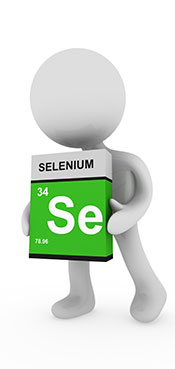
3. Contains a Large Amount of Selenium
Selenium is an essential mineral that we need to remain healthy.
Among other benefits, selenium plays a vital role in DNA production, immune health, reproductive health (15).
Unfortunately, selenium deficiency is thought to affect approximately 1 billion people around the world (16).
Whether from meat or plant foods, selenium initially comes from soil and the uptake of the mineral by plants.
That said, soils are not as selenium-rich as they used to be, so most food does not provide as much selenium as it once did (17).
Importantly, turkey is exceptionally selenium-rich.
An 8 oz (225 gram) serving of turkey provides more than 100% of the RDA for selenium (1).
4. Turkey Is Extremely High in Protein
As mentioned earlier, turkey is the king of all meats when it comes to protein.
Per gram, no other meat offers more;
- On average, dark turkey meat has a protein density of 28.6%.
- Lighter turkey meat has a protein density of 29.9%.
By comparison, red meat options like a ribeye steak or a pork chop have a protein density of approximately 24% (18, 19).
Turkey also performs extremely well for protein density per calorie.
For example, the table below compares the protein density of light and dark turkey meat against various other meats (1, 2, 20, 21);
| Type of Meat | Calories per 100g | Cals from protein per 100g | Protein Density |
| Light turkey meat | 157 | 119.6 | 76.2% |
| Dark turkey meat | 187 | 104.4 | 70.7% |
| Pork tenderloin | 147 | 104 | 70.7% |
| Porterhouse steak | 258 | 72 | 27.9% |
As you can see in the table, light turkey meat is significantly more protein-dense than lean cuts of beef and pork.
Dark turkey meat has a similar protein-density to lean pork.
Although turkey is a more concentrated source of protein, this does not mean that turkey is a “better” choice than beef or pork
Both those meats are very nutritious too.
Lastly, it is worth remembering that, similar to all animal foods, turkey provides a “complete” source of protein that is highly digestible and bio-available.
5. Turkey is High in Several Important Minerals
As shown in the nutrition facts, turkey is particularly high in the minerals iron, phosphorus and zinc.
These three minerals all play an important role in health.
Iron
It is essential to consume enough iron for its positive effects on the growth and repair of the body and its role in making hormones (22).
Sadly, iron is one of the most common nutrient deficiencies in the world.
Worldwide, more than 1.5 billion people are suffering from iron deficiency, and this figure stands at 10 million in the United States (22).
Iron deficiency is nutritional in causation and it is easy to fix by eating iron-rich foods such as meat.
An 8 oz (225 g) serving of dark turkey meat supplies 32% of the RDA for iron (2).
Phosphorus
For some reason, phosphorus seems to be the mineral that everyone forgets.
However, sufficient dietary phosphorus is vital for a whole range of reasons.
For instance, phosphorus is critical for our bone and skeletal health and deficiency may cause negative effects on bone development. Especially for young children, there is a risk of conditions such as rickets and osteomalacia from phosphorus deficiency (23).
Phosphorus works in a delicate balance with calcium to build, strengthen and maintain healthy bones. Too much or too little can upset this delicate balance, which can potentially cause problems such as arterial calcification and osteoporosis (24, 25).
Eating 8 oz (225 g) of light turkey meat will provide around 48% of the RDA for phosphorus (1).
Zinc
Zinc is vital for so many processes in the body, and it plays an integral role in our immune system and protein synthesis (26).
An 8 oz (225 g) serving of dark turkey meat will provide a substantial amount of zinc and contributes about 64% of the RDA (2).
The Difference Between Dark and Light Turkey Meat

Earlier on, we reviewed the slight nutritional differences between the two parts of turkey known as “dark” and “light” meat.
However, some people wonder why there are these dark/brown parts of turkey meat in the first place.
The answer is simple; myoglobin.
Meats such as beef and lamb contain significant amounts of this protein, and it is what gives them their red color.
The reason for this is because myoglobin contains iron, and when iron combines with oxygen, it oxidizes and turns a darker color.
For example, beef will progressively get darker and start to brown if you leave it in the fridge too long.
Turkey also contains myoglobin, but in smaller concentrations than red meat.
See this full guide to red meat vs. white meat for more information.
Why Does Turkey Have Some Dark and Some Light Meat?
Firstly, the reason why some parts of turkey have darker meat is that these areas store more oxygen.
For instance, the muscles around turkey breasts do not require much oxygen because they do no real work.
A turkey is very heavy and cannot fly for an extended amount of time, and these birds generally spend their time walking around.
As a result, their leg muscles require a lot more oxygen, and this oxygen reacts with myoglobin stored in the muscle’s blood vessels.
In other words; areas of the turkey near active muscles will provide dark meat, while other areas will not.
Delicious Turkey Recipes
Never cooked turkey before?
There are many different ways to do it, and everyone has their own favorite recipe.
But if you are looking for some ideas, then the following recipes all work very well.
1. Orange Butter-Basted Roast Turkey

Roasted turkey has to be the first choice; cooked right, it tastes delicious.
This recipe involves basting the turkey skin with butter and freshly squeezed orange juice.
Ingredients
- 1 large turkey
- 2 large oranges
- 3 tbsp butter
- 1 tsp salt
- 1 tsp black pepper
- 1 tsp garlic powder
Instructions
- First of all, pre-heat the oven to a temperature of 175°C (350°F).
- Next, blend the two large oranges and then transfer the juice to a pan.
- Once the orange juice is in the pan, bring to a boil and then turn down the heat and simmer until the liquid reduces by half. It should be much thicker in consistency.
- Add the butter, salt, black pepper and garlic powder to the pan until everything has melted and then take off the heat.
- When the mixture has cooled down, it should be thicker in consistency. Rub it all over the outside skin of the turkey, and then put the turkey in the oven.
- Finally, cook for approximately 2 and a half hours (depending on your type of oven) until the skin has a golden crispy appearance.
2. Turkey Steaks Marinated In Curried Yogurt

This recipe involves marinating some turkey steaks in a curried yogurt sauce and then grilling.
Ingredients
- 1 cup (240 ml) whole yogurt
- 2 tbsp curry powder
- 1 tbsp tomato paste
- 1 tsp cayenne pepper
- 1 tsp salt
- Pinch of black pepper
Instructions
- This recipe works best on a BBQ, but a normal grill will suffice!
- Firstly, pour the cup of yogurt into a container and add the curry powder, tomato paste, cayenne pepper, salt and pepper.
- Mix everything well until you have a consistent and smooth marinade.
- After this, put however many turkey steaks you require into the container and fully cover in the marinade.
- Once fully coated, put the container in the refrigerator until the next day.
3. Turkey and Vegetable Kebabs

Chunks of turkey meat accompanied by various vegetables make these turkey and vegetable kebabs a tasty meal.
Ingredients (per 4 people)
- 800 grams (1.75 pounds) of turkey meat
- 3 tbsp olive oil
- 1 small red onion
- 2 bell peppers of any color
- 1 tsp salt
- Pinch of black pepper
- 2 tsp red wine vinegar
- 5 cloves mashed garlic
Instructions
- Firstly, make a marinade by combining the olive oil, red wine vinegar, mashed garlic, salt and pepper.
- Next, chop the turkey into bite-sized chunks and combine it with the marinade in a container.
- After this, chop the bell peppers and red onion into pieces similar in width to the turkey chunks.
- Once everything is ready, mix rigorously until everything is fully covered in the marinade and then put the container in the refrigerator for 1 hour.
- One hour later, cook the kebabs on a BBQ or simply on the grill until done. It should take less than 10 minutes.
Final Thoughts
Turkey is not quite in the same league as beef or lamb regarding the absolute amount of nutrients it provides.
However, with a lower calorie count, turkey is not far away in terms of nutrient-density.
It is also a more concentrated source of protein than other meat.
Overall, turkey is a nutritious food that can play a beneficial role in a healthy diet.
If you cook it right, it tastes delicious too.
For more on poultry, see this guide to goose meat.

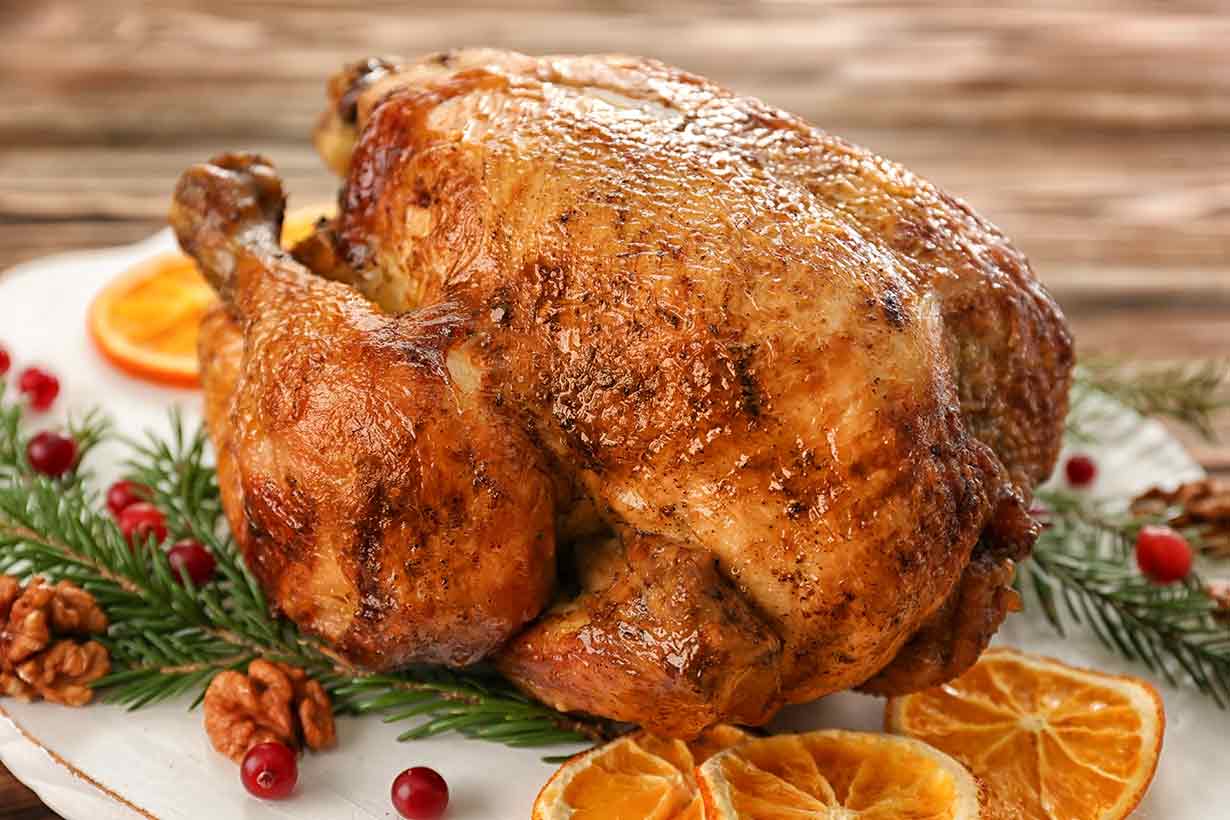
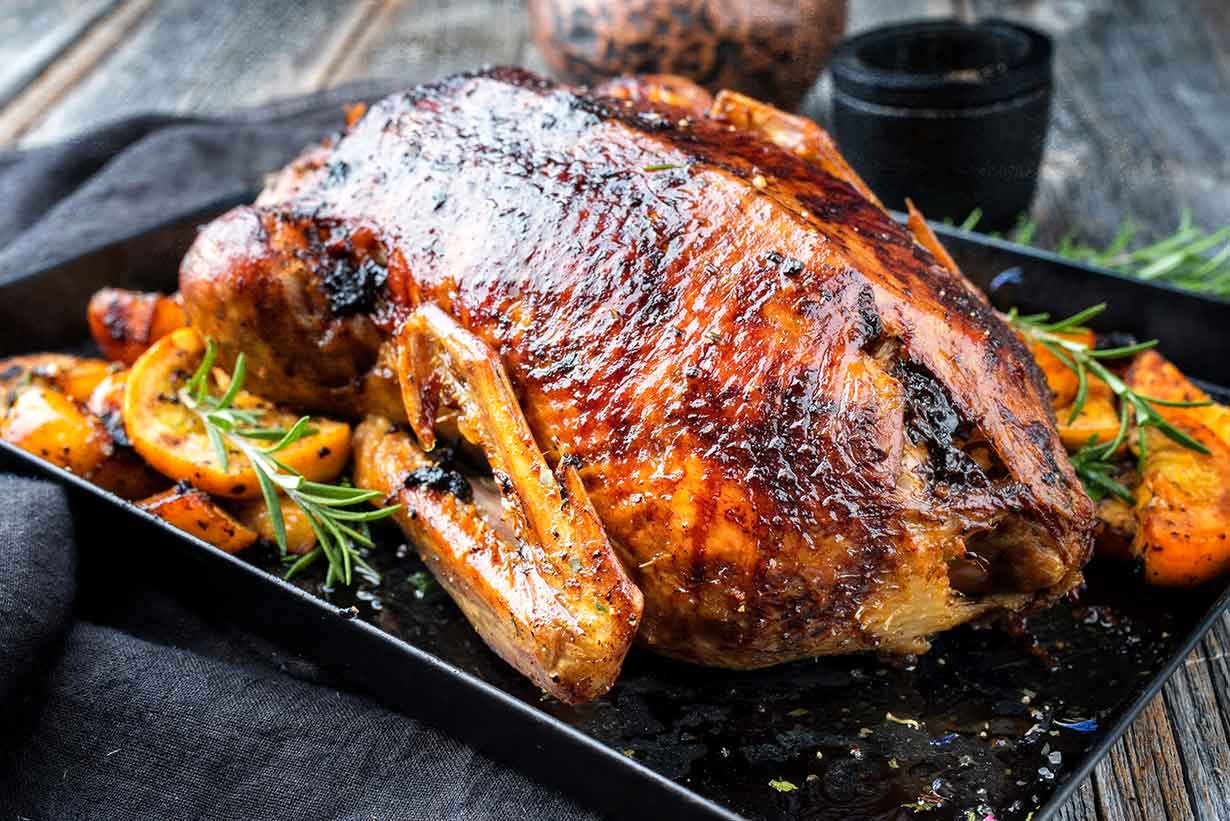
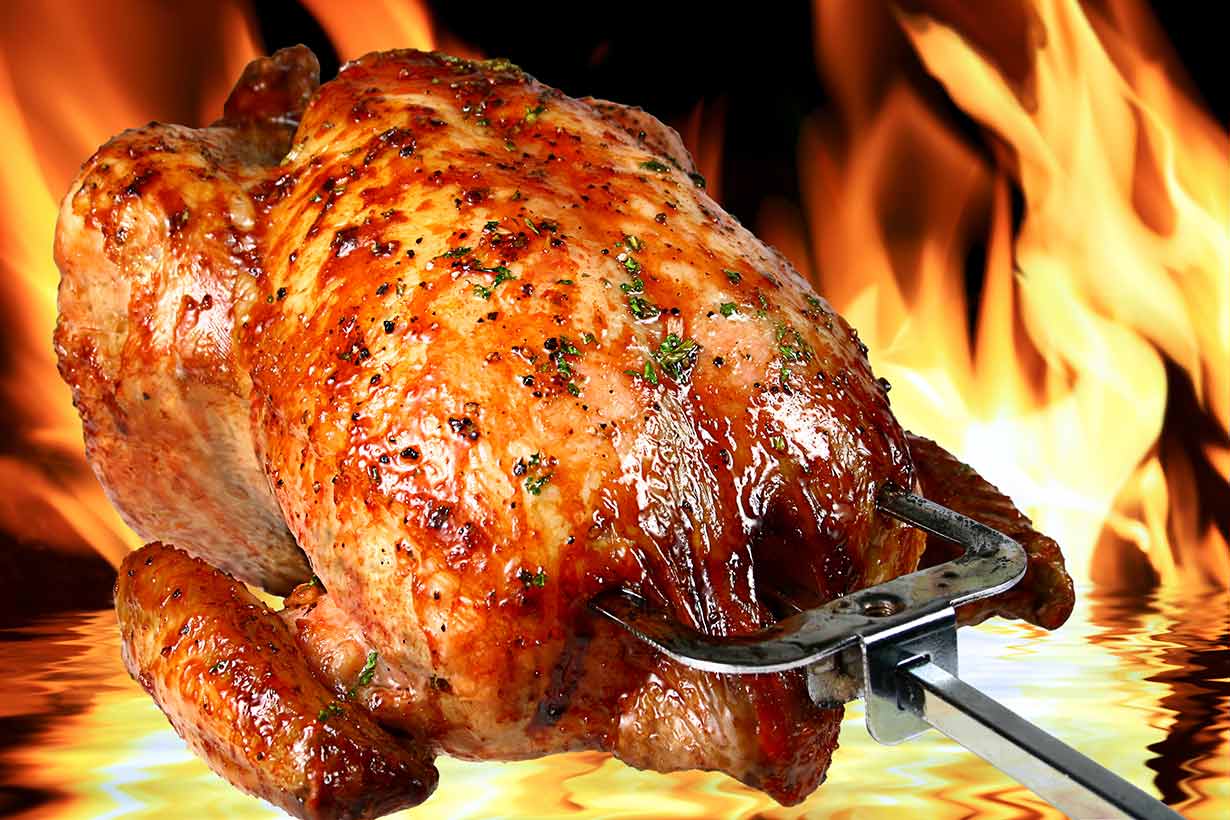
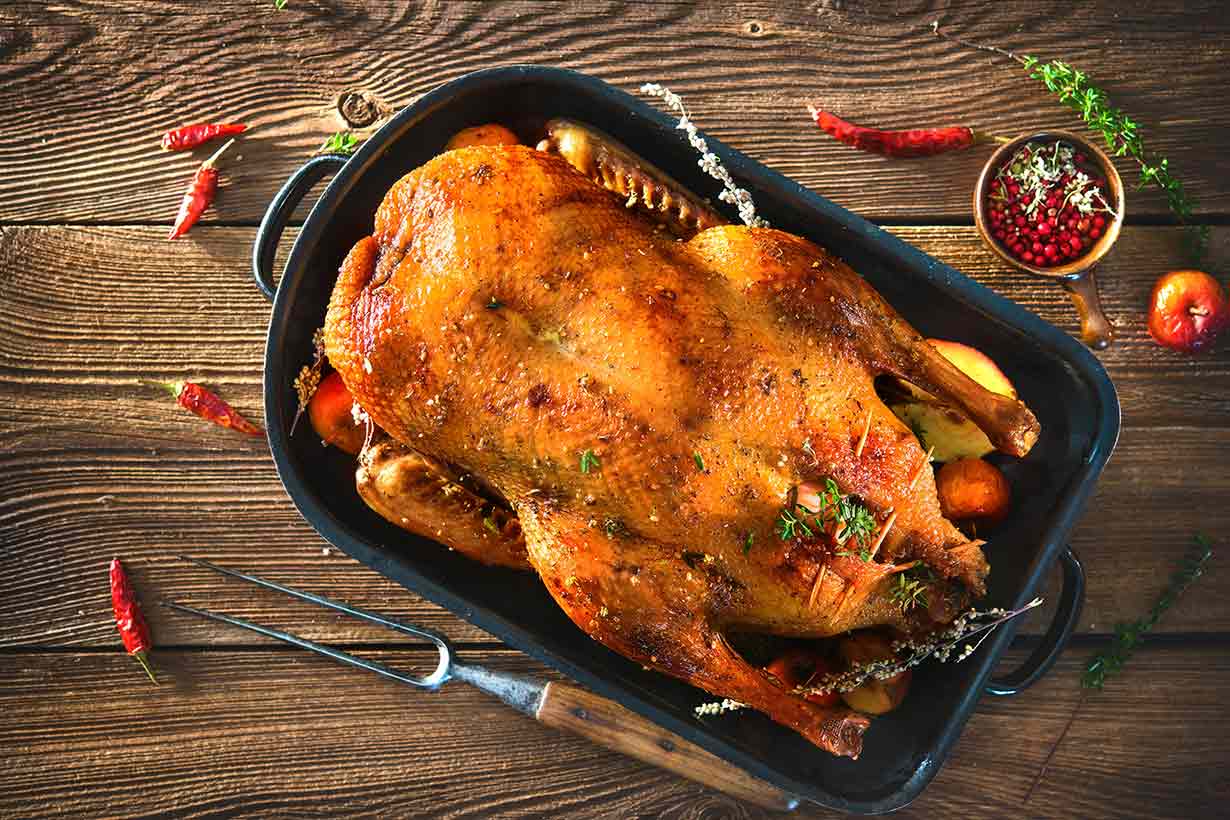
Very interesting.